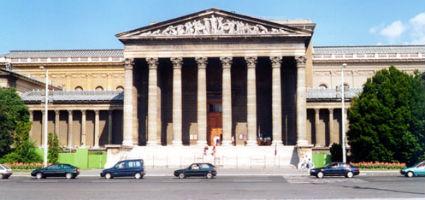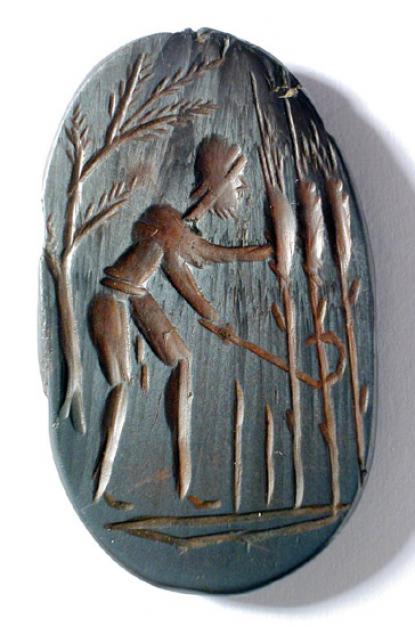2024. April 28. Sunday
Budapest Museum of Fine Arts - Budapest
 |
Address: 1146, Budapest Dózsa György út 41.
Phone number: (1) 469-7100
E-mail: info@szepmuveszeti.hu
Opening hours: Tue-Sun 10:00-18:00
|
The exhibition has closed for visitors.
2004.06.08. - 2004.08.29.
Museum tickets, service costs:
|
Ticket for adults
(valid for the permanent exhibitions)
|
2800 HUF
|
/ capita
|
|
Ticket for adults
|
3200 HUF
|
|
|
Group ticket for adults
|
2900 HUF
|
|
|
Ticket for students
(valid for the permanent exhibitions)
|
1400 HUF
|
/ capita
|
|
Ticket for students
|
1600 HUF
|
|
|
Group ticket for students
|
1400 HUF
|
|
|
Ticket for pensioners
(valid for the permanent exhibitions)
|
1400 HUF
|
/ capita
|
|
Audio guide
|
800 HUF
|
|
|
Video
|
1000 HUF
|
Engraved precious stones (gems) had been produced in the cultures of the classical antiquity from the very beginning. They had three main uses: as jeweler, as seals and as protective amulets. Their engraving in itself does not shed light on their original function. However, at the end of the 1st century B.C. some new variants appeared which clearly had talismanic function. Even though they displayed images that had been around for ages, new motifs appeared simultaneously with these: magic signs, spells written in Greek script, which had no meaning in Greek whatsoever, 'monster' figures, and designs that were incomprehensible to the outsider. Most gems were used as ring stones, others as pendants or sewn into clothing.

Besides, at the time of their appearance the talismans displaying the century-old, 'traditional' iconographic types of Graeco-Roman glyptic were also in use. The fact that magical gems were gaining ground did not represent the victory of magic over religion, as it is often thought today. In the cultures of the antiquity a clear line can rarely be drawn between these two spheres.
These gems were frequently used in health care. Magical healing was one approach in ancient medicine among others, and, mostly, equal to others. Variety presents the most important characteristic of magical gems: in and through them the elements of various cultures got woven into a single fabric. Magical gems indicate the process through which the magical traditions of ancient Mediterranean cultures were getting integrated into an international discipline.
Even though the working principles of magical gems seem distant, at least two of their features might strike a chord even now. Their driving force was the need, the demand for knowledge that could be applied with success - as an old magician put it: 'the one that is without real knowledge is a man in name only'. Besides, the desire of people for getting ahead (the fulfillment of which was expected of these gems centuries ago) is still on the agenda of mankind.

Besides, at the time of their appearance the talismans displaying the century-old, 'traditional' iconographic types of Graeco-Roman glyptic were also in use. The fact that magical gems were gaining ground did not represent the victory of magic over religion, as it is often thought today. In the cultures of the antiquity a clear line can rarely be drawn between these two spheres.
These gems were frequently used in health care. Magical healing was one approach in ancient medicine among others, and, mostly, equal to others. Variety presents the most important characteristic of magical gems: in and through them the elements of various cultures got woven into a single fabric. Magical gems indicate the process through which the magical traditions of ancient Mediterranean cultures were getting integrated into an international discipline.
Even though the working principles of magical gems seem distant, at least two of their features might strike a chord even now. Their driving force was the need, the demand for knowledge that could be applied with success - as an old magician put it: 'the one that is without real knowledge is a man in name only'. Besides, the desire of people for getting ahead (the fulfillment of which was expected of these gems centuries ago) is still on the agenda of mankind.
